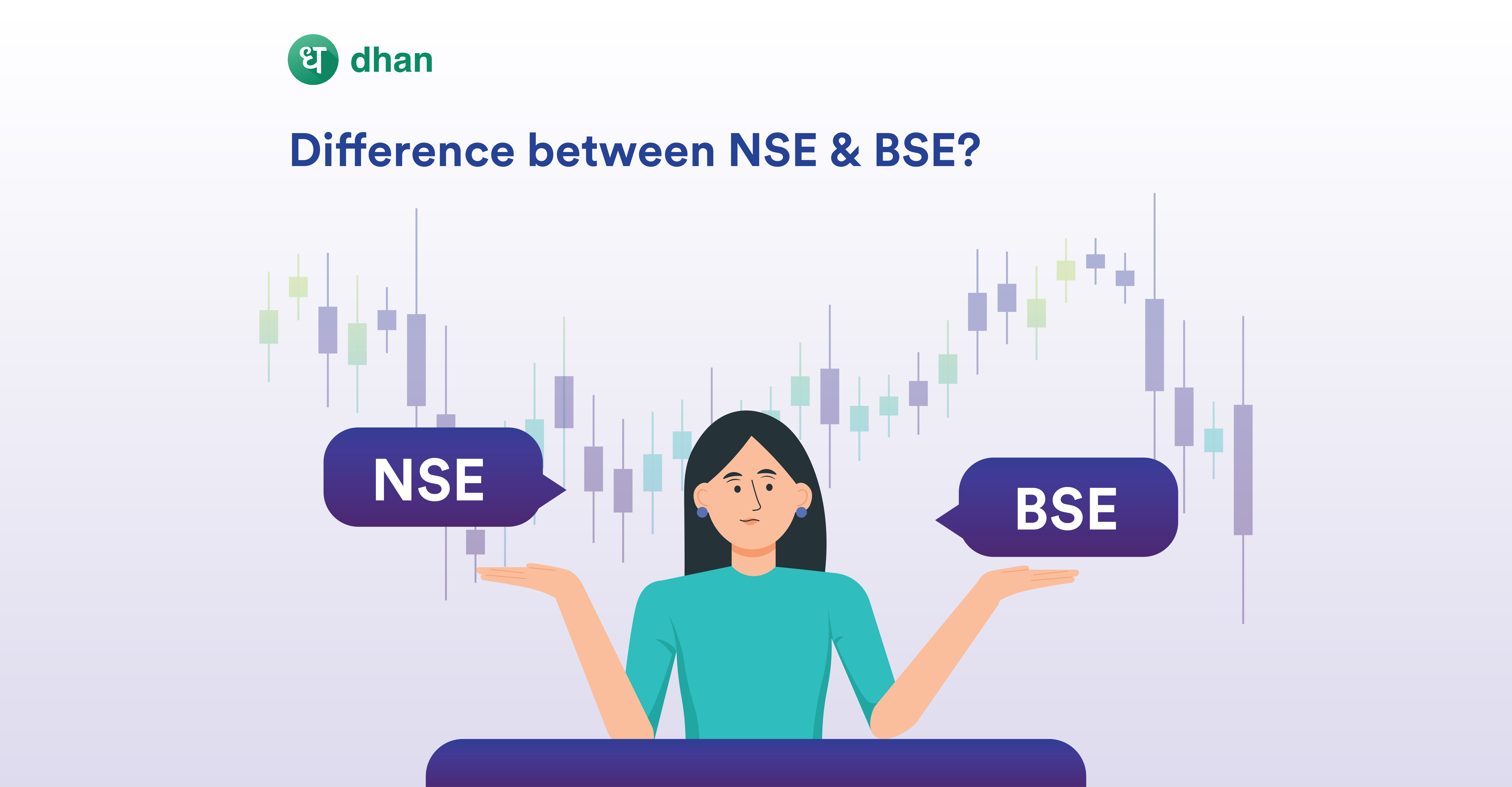The world of investing is chock-full of strategies designed to achieve one goal – profits. Some strategies work like an F1 car, zooming across multiple criss-cross turns to reach the goal. This is called active investing.
Other strategies take a more relaxed approach, much like riding a bicycle on a picturesque path across the countryside. This is called passive investing. Either way, it’s important to figure out what approach works best for you.
That’s why we’re going to compare active and passive investments and strategies in simple words. Check out the index for more information on what we will cover!
What is the Meaning of Active Investing?
Active investing is a strategy in which a trader will buy and sell securities frequently. The goal of active investing is to beat the market, which means generating more returns than benchmark indices like Nifty 50 and Sensex.
This may not be easy. On one hand, the investor who has an actively managed portfolio will need to have a deep understanding of either or both of:
- Fundamental analysis: EPS, P/E, and others
- Technical analysis: charts, indicators, and others
On the other hand, beating the market may require keeping weekly, daily, or even hourly tabs on every stock in the portfolio. After all, every price fluctuation may be an opportunity to buy or sell.
However, data suggests that most active investors fail to beat the market. Some studies indicate that the failure rate may be as high as 90%. That said, those who do beat the market may enjoy significantly high returns.
Example of Active Investments
The most common example of active investing is an equity mutual fund. It’s a pool of money that’s managed by a fund manager and a team of analysts. They handle the buying and selling of stocks on a day-to-day basis.
The goal of the fund management team is to generate market-beating returns for their investors. To achieve this goal, most equity funds will typically use technical analysis to monitor stocks daily.
As you can tell, there’s a high degree of monitoring, analysis, and trades involved. That’s why actively managed mutual funds and portfolio managers are known to charge a relatively high fee.
But retail investors who want to build an actively managed portfolio must do all of this on their own. This is one of the reasons why working professionals prefer to follow a passive investing strategy.
P.S: Swing trading is another example of active investing. Here’s What is Swing Trading
What is the Meaning of Passive Investing?
Passive investing means a strategy that involves buying and holding stocks for the long term. The goal of passive investing is to move with the markets and generate returns that are on par with benchmark indices like Nifty 50.
This is known to be relatively comfortable, especially for working professionals who may not find the time to pore over complex technical charts and indicators.
That said, there is some leg work required to build the best passive investment strategies, starting with picking the right stocks with the potential to generate lucrative returns over the long run.
Most passive investors are known to turn to fundamental analysis when picking stocks for the long term. Fundamental analysis involves evaluating crucial aspects like the:
- Company’s current and past financial health
- Growth potential of the company
- Growth potential of the industry
Passive investing may come across as a laid-back strategy. But it is known to work only when you pick the right investments that can help you hit your long-term goals and survive the test of time.
Example of Passive Investments
An index fund is one of the best examples of an asset that follows a passive investing strategy. As the name suggests, an index fund is designed to mirror stock indices like Nifty Bank or Sensex.
This makes the fund manager’s job easy. All they have to do is set up the portfolio once and rebalance it occasionally when the components of the index change.
Since the components of an index fund and the index they mirror is more or less similar, the returns are on par with the broader market. Moreover, the fee of most passive investing funds and strategies is relatively low.
The reason? Stocks are bought and sold at a significantly lower frequency. This can also help you access tax benefits as the longer you hold an asset, the lower the tax rates may be.
Difference Between Active Investing and Passive Investing
We’ve taken a look at the individual meaning of active investing and passive investing. Now it’s time to compare and contrast both wealth creation strategies simultaneously.
🧠 1. Philosophy
The goal of active investing is to beat the market through a frequency of short-term trades. Intraday trading is a good example of this strategy where positions on a stock are closed off daily.
On the flip side, a passive investing strategy aims to generate returns in line with the market by using a “buy and hold” or long-term investing strategy. The frequency of trades is, by association, lower.
🏃♂️ 2. Effort
Outperforming the market is known to be a difficult task. Traders will have to keep up with price fluctuations constantly to spot the right opportunities. This makes active investing a high-effort exercise.
In contrast, a passive investing strategy is designed to be low effort because there’s no need to buy and sell often – just pick a few stocks or funds and stay locked in for the long term.
💸 3. Fees
Buying and selling stocks often may carry high fees because of the brokerage charges and short-term capital gains tax. That’s why active investing is known to be costly.
Passive investing may carry lower charges than active investing as the number of trades will be lower and the long-term capital gains tax is meant to be far less expensive.
🤑 4. Returns
Active investing has the potential to generate substantially high returns if executed properly. In fact, it’s the main reason why many traders turn to derivatives, intraday trading, and other active investing strategies.
Passive investing may not generate market-beating returns, which is why it is known to be less lucrative than active investing.
✅ 5. Diversification
Active traders can access multiple strategies and financial instruments to generate lucrative returns. For example, an active investor can have a portfolio of stock futures, commodity options, currency swaps, and more.
On the other hand, a passive investor can only buy and hold so they can’t invest in any derivative. Instead, they may turn to stocks with solid long-term potential, ETFs, fixed-income securities, and others.
Active Vs Passive Investing At a Glance
Here’s a snapshot of the differences between active and passive portfolio management.
| Metric | Active Investing | Passive Investing |
| Philosophy | Beat the market | Grow with the market |
| Effort | High | Low |
| Fees | High | Low |
| Returns | High | Low |
| Diversification | High | Medium |
Should You Choose Active Investing or Passive Investing?
Active investing is known to fare well when it comes to returns but can require high effort combined with more fees. Passive investing is a slow and steady strategy that’s economical but may not generate exorbitant returns.
Either way, you must evaluate your risk profile and other factors like the effort and time you are willing to dedicate to your investments before deciding which approach to investing you should take.
Dhan allows you to trade in short-term instruments like derivatives and invest in long-term assets like stocks and ETFs. Tap the button below to explore the lightning-fast Dhan app!
FAQs
Q. What is Active Investing?
Active investing is a method of buying and selling financial securities with the goal of outperforming the market. The investor or trader following this strategy will actively monitor investments to beat a benchmark index like Nifty 50 or Sensex. Hence the name active investing.
Q. What is an Example of a Passive Investment?
An index ETF like Nifty BeES is one of the best examples of a passive investment. The portfolio of an index ETF will mirror that of the benchmark index like the Nifty 50 that it is made after. The portfolio of an index ETF only changes occasionally and is generally on autopilot.
Q. Is ETF Passive Investing?
An ETF is by design meant to be a passive investment vehicle. But there are exceptions to the rule. In countries like the US, there are active ETFs that operate much like an equity mutual fund.
Q. Is Passive Investing Better Than Active?
Passive investing is known to have advantages over active investing because it’s a low effort, low cost method of generating wealth. Beating the market is also a difficult task and only a few manage to do it, which is the reason why many prefer passive investing. That said, a one-size fits all approach may not work when it comes to investing.
Disclaimer: This blog is not to be construed as investment advice. Trading and investing in the securities market carries risk. Please do your own due diligence or consult a trained financial professional before investing.




Comments are closed.